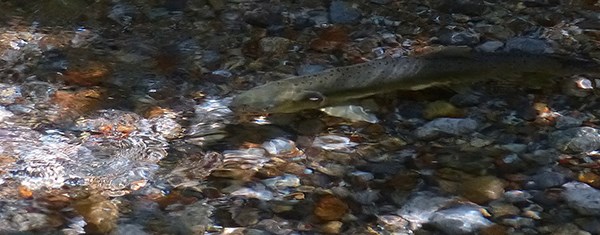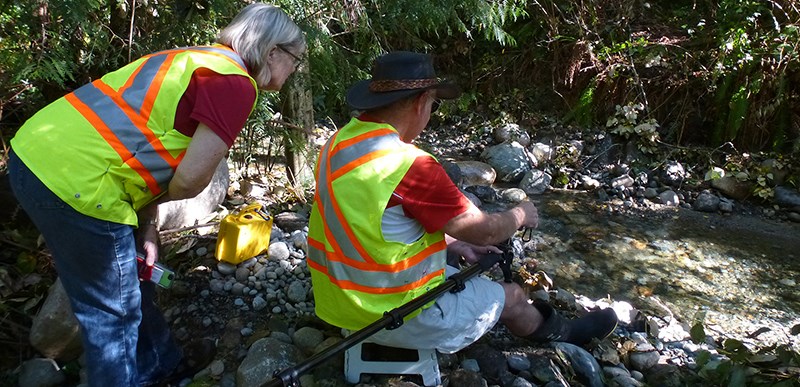An old friend has returned to Port Moody after a long absence.
Dozens of pink salmon have been making their way into Noons and Mossom creeks in the past few weeks, encouraged by rains that replenished local waterways that had dried up over the summer.
"It's good news. It's a cause for celebration," said Ruth Foster, a Mossom Creek hatchery co-founder, who said the recent run of several dozen pairs was the largest in two decades. In 2013, the last time pinks were in the creek, hatchery volunteers saw just four pink salmon.
The news is particularly good because Mossom volunteers are off to Tenderfoot Creek Hatchery in Squamish this week to collect pink salmon eggs in the hopes of reintroducing the species to the creek.
Historically, pinks were found in Port Moody inlet and their reintroduction will mean kids will be able to fish for them, Foster said. The fish will also add important nutrients into the creek, she said.

Meanwhile, a spokesperson for Noons Creek Hatchery said volunteers were pleased to see pink salmon in Port Moody's other salmon-bearing creek as early as Sept. 1.
"Our first thought was, wow, and maybe if they spawn we can have a third species; we normally only have coho and chum," said Brian Wormald, a director of the Port Moody Ecological Society, which runs the hatchery. "We have seen a couple spawning. Assuming those eggs survive, then we will have pinks back in two years."
Sandie Hollick-Kenyon, a community advisor for Fisheries and Oceans Canada, said the pinks in Port Moody inlet and creeks are likely part of a large run destined for the Indian River, where the Tsleil-Waututh Nation restored some habitat.
"Pinks are great because you can do the enhancement on them and you see the results very quickly," Hollick-Kenyon said.
At Mossom Creek, volunteers are busy counting pinks and chalking the successful run up to improvements they made to the creek a few weeks ago. They created two spawning pools with a $10,000 Habitat Conservation Trust Fund to increase the chances of fish survival.
So far, the work appears to be paying off. As of this week, the run was over and the creek was littered with carcasses.



